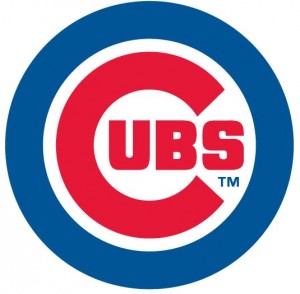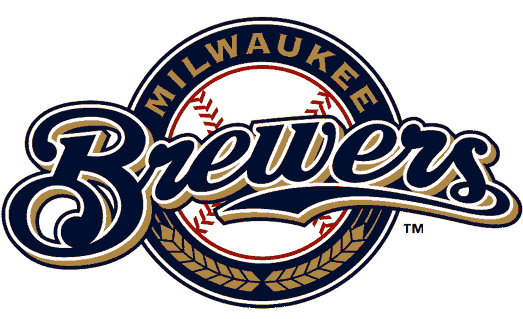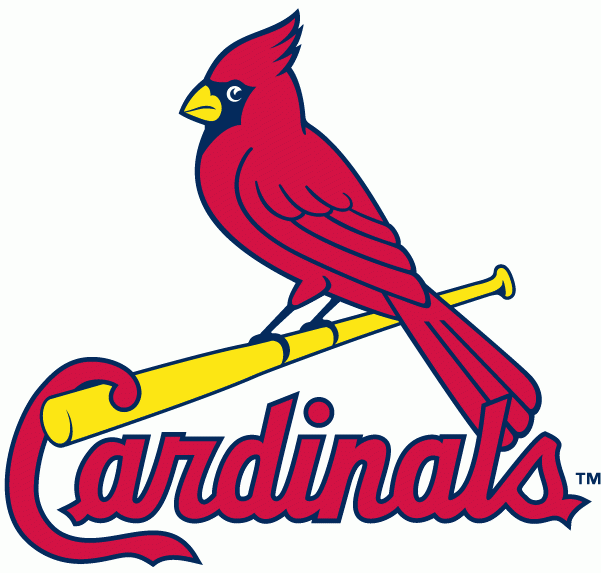When most people previewed the NL Central at the start of this season, the consensus seemed to be that there were two pretty clear tiers in the division. While that's turned out to be true, the surprise is who is heading up that top tier. There may be other divisions that are stronger top-to-bottom, but if the playoffs started in July, only the NL Central would have three teams comfortably in the postseason.
 Chicago Cubs, 35-45. Fourth in division, 10.5 back of second wildcard.
Chicago Cubs, 35-45. Fourth in division, 10.5 back of second wildcard.
Are the top three teams in this division really that good, or are they just beating up on the Cubs and Brewers? It might be a fair question to ask, but we do know that there are two very clear sellers in this division and the Cubs are one. Theo Epstein and Jed Hoyer continue to rebuild the organization from scratch, but unfortunately, there aren’t all that many attractive trade chips left.
Anthony Rizzo and Starlin Castro have effectively been deemed off-limits with their long-term extensions, leaving Matt Garza as the lone realistic impact trade chip left. Jeff Samardzija’s name has been floated in rumors in recent weeks, but he has so much team control left that the Cubs would have to be bowled over to consider moving him. While Samardzija has continued to improve every year he’s been a full-time starter, there’s probably still some question as to whether or not he’d be worth one of your classic monster deadline deals for an ace.
Garza, a free agent after the year, is a virtual lock to be dealt but his value probably isn’t as high as it would have been last year (had he been healthy). With the new free agent compensation rules in effect, it’s harder for selling teams to rake in piles of prospects for rentals, but the Brewers did do well in last year’s Zack Greinke trade. The question for Chicago is whether or not they can get a comparable deal for Garza.
The Cubs also have pieces they’d probably like to move, but are going to have to eat a big chunk of money to do so. Yes, that would be Alfonso Soriano, who’s due about $27 million between what’s left for this year and next season’s $18 million salary. Outside of Soriano, everyone and everything that isn’t bolted down should probably be for sale, considering the Cubs are still a few years away from being a legitimate playoff contender.
 Cincinnati Reds, 47-36. Third in division, leaders for second wildcard.
Cincinnati Reds, 47-36. Third in division, leaders for second wildcard.
Poor Cincinnati. They’d be in first place in the AL Central, but instead are in third, trying to hold off the rest of the league for the second wildcard spot. They entered July with a rather comfy lead in that department — a 4.5 game lead over Washington for that spot — but unlike Pittsburgh and St. Louis, they have to worry about the teams below them as well as the ones they’re chasing.
In recent years, the Reds have carried a reputation for having a potent offense and a less-than-stellar pitching staff, but this year roles have been reversed. It’s been the starting pitching carrying the Reds for much of this year, even with Johnny Cueto bouncing back and forth from the rotation to the disabled list. They could looking for starting rotation help if Cueto’s status continues to be iffy, but they also have Tony Cingrani to plug into the rotation if and when the need arises. Where they could use a little help is in middle relief — while Aroldis Chapman has been dominant in the 9th, they’ve had trouble getting him leads to close out at times.
The other area in which the Reds could improve is in the outfield, where Ryan Ludwick has been hurt all year and Chris Heisey is just returning from a DL stint that started in April. Xavier Paul has been serviceable as a replacement for both, but if Heisey falters or isn’t ready to go full-time, another bench outfield bat could make some sense. Of course, they could also just call up Billy Hamilton to play center field and shift Shin-Soo Choo over to left without having to give anything up.
 Milwaukee Brewers, 32-49. Fifth in division, 14 back of second wildcard.
Milwaukee Brewers, 32-49. Fifth in division, 14 back of second wildcard.
It’s one thing to go into a season knowing you’re going to stink, like the Marlins or Astros did. It’s another thing altogether to be dealt crushing blow after crushing blow until you lose all hope for a season. That’s the Brewers this year. In a way, this season may be a blessing in disguise for the Brewers, who have been pushed to compete every year by owner Mark Attanasio, despite the fact that it just isn’t a sustainable model when you’re baseball’s smallest market. Now, injuries and poor roster decisions have the Brewers staring at the third-worst record in baseball. It’s a perfect time to rebuild a farm system that has ranked as one of the league’s thinnest in recent years.
In an ideal world, Attanasio would authorize a total teardown, allowing Doug Melvin to trade players with a year or two of team control left in order to restock the farm system with higher-ceiling prospects. The fear among those rooting for a rebuild is that the Brewers write this year off as bad luck and try to “contend” again next year with another mediocre rotation. If the Brewers do decide to commit to an actual rebuild, however, they could have quite a few interesting pieces.
Aramis Ramirez would be one of the better power bats available on the trade market, although he’s been hampered by a sprained knee for much of the season and would be better suited as a DH. Yovani Gallardo and Kyle Lohse would make for solid #3 starters on a contending team (and dealing Lohse would help soften the blow of losing a first-round pick for him). There are a slew of bullpen arms that could also help a team in a playoff race, especially one looking for someone who’s been a Proven Closer: Francisco Rodriguez, Mike Gonzalez, Jim Henderson and yes, even John Axford, who’s rebounded from a horrific start to the year to go 22 straight outings (and counting) without allowing a run. Even Norichika Aoki may be available, after the recent discovery that the Brewers won’t hold his rights for arbitration after his current deal is up.
It may just be easier to list the players the Brewers won’t be willing to give up: Ryan Braun, Jean Segura, Carlos Gomez, Jonathan Lucroy. That’s it. That’s pretty much the list. Everyone else could (or at least probably should) be available.
 Pittsburgh Pirates, 51-30. First in division.
Pittsburgh Pirates, 51-30. First in division.
The Pirates have the best record in baseball and are on pace for 100 wins for the first time since 1909. Despite all that, you'll have to forgive Pirates fans if they still come off as a little too cautiously optimistic. The Bucs entered the All-Star break in first place last season, after all, and fell apart down the stretch for the second straight year. They haven't had a winning season since 1992, but the good news is they've built up enough of a cushion that even with a disastrous second half, they should still be able to snap that streak this season.
The Pirates' success thus far has been all about pitching — entering July, they had a league-best 3.11 team ERA and .225 opponent batting average. The starting rotation has been so good and deep that there was talk for awhile about Gerrit Cole losing his spot in the rotation if/when both A.J. Burnett and Wandy Rodriguez returned (that seems like a moot point now that Rodriguez has had another setback, however). The bullpen has also been lights-out, with the 8th/9th combo of Mark Melancon and Jason Grilli being nearly untouchable — in 77 combined innings, the duo has only allowed 11 earned runs and struck out 102. Where they could use some help, though, is in their lineup. Pittsburgh enters July ranking 19th in runs scored, 22nd in on-base percentage and 19th in slugging.
The question for the Pirates this July is basically the same one they had last July — how much, if any, future success do you mortgage in a deal that could help you win this year? Entering July with about a 10-game playoff cushion, the Pirates don't look like they need to make a deal to ensure a playoff spot. What they may need to do, however, is make one to stay ahead of St. Louis and out of the wildcard play-in game. At this point, if the Bucs are going to make a move, it looks like it'd be a minor one to pick up a role player here or there rather than making a big splash.
 St. Louis Cardinals, 49-32. Second in division, leaders for first wildcard.
St. Louis Cardinals, 49-32. Second in division, leaders for first wildcard.
What do you get the team that has everything?
If it weren't for the Pirates, the Cardinals would have the best record in the National League, and in all honesty, they're probably the better team as currently constructed. St. Louis' +112 run differential entering July was by far the best in baseball (Boston was a distant second at +80). Their starting pitching has been every bit as good as Pittsburgh's, anchored by the duo of Adam Wainwright and Shelby Miller. Their offense has been much better than the Pirates', with Yadier Molina and Carlos Beltran both playing like MVP candidates.
Really, the difference between the Pirates and Cardinals in the standings right now may be due to Mitchell Boggs' early-season implosion. The bullpen has since stabilized for the Cardinals, but it seems like every year they add another relief arm at the deadline with eyes set on situational matchups in the postseason. They may go that route again this year, but at the same time, they may not need to if they recall Carlos Martinez for the stretch run.
As one of the most complete teams in all of baseball, St. Louis could stand pat and most likely be okay. The wildcard format does provide motivation, though — if they want to avoid the one-game playoff, finding another bullpen piece, a solid bottom-of-the-rotation starter (allowing someone else to move to the pen) or a replacement for Pete Kozma would be wise.
